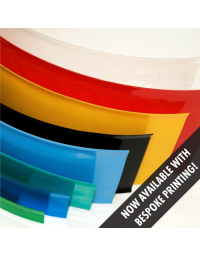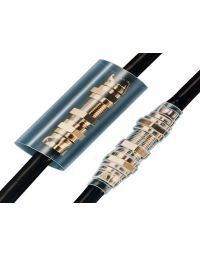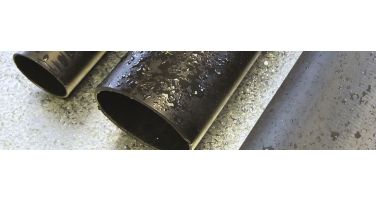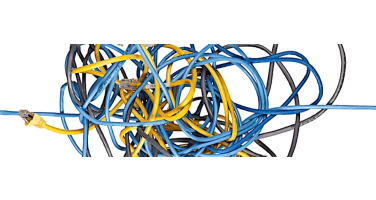Cable insulation is tricky when you consider just how many options there are for insulating and protecting wires and cables.
The most important questions relate to what material is most suitable for a specific purpose. And there is a lot to consider.
What Is A Cable Insulation?
Insulation separates conductors, electrically and physically, within a cable. They are usually found around the outside of a cable and around individual wires within a larger cable.
Insulators have a much higher resistivity than conductors and semi-conductors and make it nearly impossible for electrical charge to pass through them.
Insulating cable jackets and sleeves also protect against environmental dangers like water and heat. The insulator can impact on the safety and effectiveness of the wire. It can also prevent a catastrophic system failure – so it is important that you get it right.
A perfect insulator does not exist, because every material conducts small numbers of charges which can carry current. But every insulator has specific properties that make it suitable to certain tasks.
Cable Insulation Properties
All cable insulators share some electrical properties. They all have a high capacitance (ability to store an electrical charge) and good attenuation.
But the physical properties of insulators can vary quite a lot, making different materials suitable for different functions.
Some insulators need to be highly flexible and resistant to cracking. Others need to be resistant to certain chemicals or resistant to heat or fire.
You should know how far you can stretch a material before it breaks. This breaking point is referred to as a material’s ultimate elongation (expressed as a percentage).
It is also important to check that the material’s tensile strength (how much force it would take to break the insulation material) and temperature rating (the range of temperatures that the material can be used without breaking) align with your purposes.
Halogen And Non-Halogen Insulation
Halogen and non-halogen cables is one crucial distinction to make. The halogens are fluorine, chlorine, bromine, iodine and astatine – they are all non-metallic elements that emit a thick toxic smoke if burned.
Halogen insulation became popular because it helps stop fire from affecting cables. However, if these cables are exposed to fire, the toxic smoke and fumes that are released can be harmful to humans and circuitry.
Most network cables are still insulated with halogen material like polyethylene, PVC and thermoplastic polyurethane.
Halogen-free or non-halogen cable jackets or protectors are increasingly being used in new housing developments and in sensitive circuit environments, such as in aircrafts, rail and military applications.
CABLE INSULATION MATERIAL
POLYVINYL CHLORIDE (PVC) INSULATION
PVC is one of the most common cable insulating materials and the world’s third-most widely produced synthetic plastic polymer. This is largely because it is inexpensive and easy to manipulate and so can be used in a wide variety of settings. The material contains halogens and so it is flame resistant. It is also resistant to moisture and abrasion, as well as things like petrol, ozone, acids and solvents.
It is odourless, tasteless and non-toxic (unless burned) so can be used in some sensitive settings like medical uses and food applications.
PVC has high attenuation and capacitance loss, meaning it has good electrical insulation properties.
SEMI-RIGID PVC (SR-PVC) INSULATION
Semi-Rigid PVC tubing is used as an exterior insulating material because it is resistant to bending, snapping and abrasion. It has uses in a lot of industries including in automotive, hydraulic, industrial, agricultural, marine, aviation and mining environments.
The material is resistant to crushing and will not kink, helping to protect sensitive cables. Semi-Rigid PVC is also resistant to heat, water, oil, grease, lubricants, acids and alkalis. It is also flame retardant.
NEOPRENE (POLYCHLOROPRENE) INSULATION
Neoprene is a synthetic thermoset rubber that can become an extremely flexible cable sleeving. The material has good elastic and mechanical properties, it is not abrasive and it is also resistant to petrol and oil. It is very flame retardant and self-extinguishing and is often used in military applications.
SILICONE INSULATION
Silicone is very heat resistant and flame retardant. It is safe to use up to temperatures of 180°C. Small silicone sleeving is often used for electrical sleeving, but the material can be used for lots of different purposes, and is comfortable in many different environments.
FIBERGLASS INSULATION
Fiberglass and other high temperature performance sleevings can be used in very hot environments. Some still perform at temperatures in excess of 500ºC.
Hilltop Products stocks a range of high temperature furnace tubing that can work at high temperatures. The range includes fluoroplastics, heat reflective tubes and pyrojacket thermos firesleeves made from or containing fiberglass.
The products can be coated, woven and plated and are designed for hose and cable protection in extreme conditions. The products are commonly used in aerospace, automotive, petrochemical, boiler, furnace, glass and metal industries.
ETHYLENE PROPYLENE DIENE MONOMER (EPDM) INSULATION
A synthetic rubber insulation that is heat, ozone, weather and abrasion resistant. EPDM also has excellent electrical properties and it is flexible at low and high temperatures between -55°C and 150°C.
POLYTETRAFLUOROETHYLENE (PTFE) INSULATION
PTFE is a thermoplastic material that is useful across a very wide range of temperatures – between -73°C to 204°C.
It is very flexible and resistant to water, oil, chemicals and heat. The mechanical properties of PTFE are low compared to other plastics.
FLUORINATED ETHYLENE PROPYLENE (FEP) INSULATION
FEP is another material that can be used for lots of different applications, and so is very popular. It is highly flame resistant. And if the cable is foamed then data can be transmitted better. FEP is commonly used in plenum cable and military applications.






